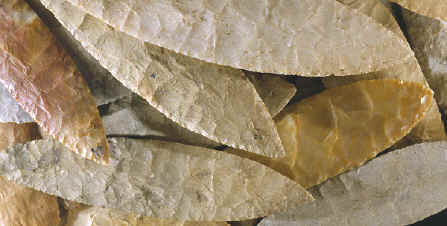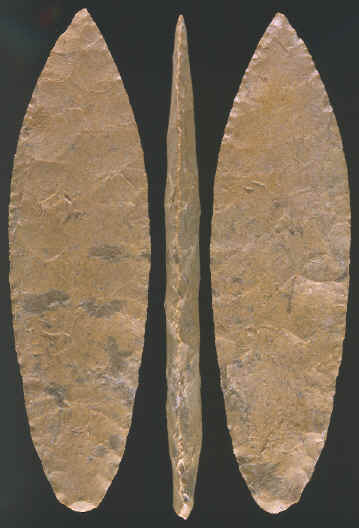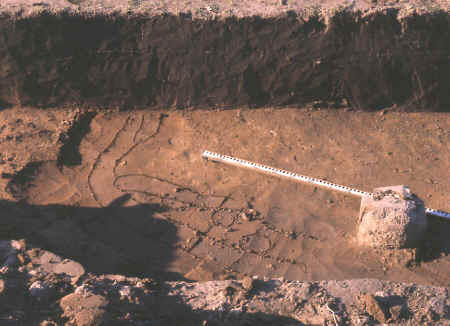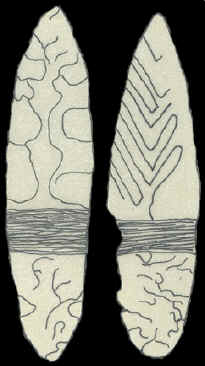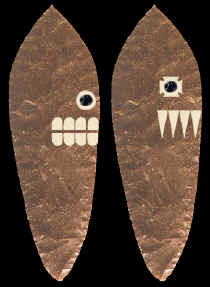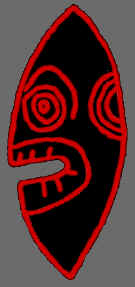|
|
|
Although a large number of Ramey knives have no apparent use wear, other examples certainly were used for cutting. Some examples were extensively resharpened from the effects of either edge breakage or wear. Other examples also show smoothing of the edges near the base and were probably hafted in some way, possibly with a leather wrapping. |
|
|
Analysis from the use of both TEM (transmission electron microscopy) and EDS (energy dispersive spectra) determined that the red pigment was made of iron (Fe) and the green pigment was composed of copper (Cu). Each of these colors probably had a symbolic meaning rather than just esthetic. "We know that color is important in the mythology and ritual of Native American groups and that the use of color is "rarely----simply incidental." (Vermilion, Krekeler & Keeley p. 1465 and Gill & Sullivan p. 30) |
|
|
|
|
The best evidence that shows that the Loyd site Ramey knives were deliberately and artistically "painted" comes from the identification and location of each of the residual traces of pigments remaining on the surfaces. The plotting work was done by Mary Vermilion and Lawrence Keeley with the use of an Olympus BHM Metallographic microscope. |
|
|
|
|
The red and green pigment traces were plotted on both Loyd site Ramey knives. The knife designated as A-41:3 had the most traces of pigments. This knife contained traces of red pigment on the pointed half (distal half) and traces of green pigment on the base half (proximal half). The Ramey knife designated as B-41:2 contains traces of red pigment on the base half (proximal half) and traces of green pigment on the pointed half (distal half). In-other-words, each knife was originally coated with both red and green pigments but in opposite patterns. Each color coated approximately half of the surface of each knife and each knife appears to have been originally completely coated with both red and green pigments. |
|
|
|
|
The only written accounts that describe a ritual and mythological meaning for "decorated" bifaces comes from the illustrated manuscripts from the Central Valley of Mexico. They portray the "personified" bifaces as a god that also represents a day within the Aztec ritual calendar. There are many similarities between the Late Stone Age cultures of the Mississippi Valley and the Central Valley of Mexico. So it would not be surprising to find that "painted" Ramey knives may have also represented some type of mythological being------Possibly a long forgotten god whose name has not been spoken since the days when Cahokia was a great city. |
|
|
"REFERENCES" 1952, Hamilton, Henry W., "The Spiro Mound," " The Missouri Archaeologist, Vo., 14," pp. 55 & 202.
1963,
Perino, Gregory, "Tentative Classification of Two Projectile Points
and One Knife from West-Central Illinois," pp. 99-100. |
|
